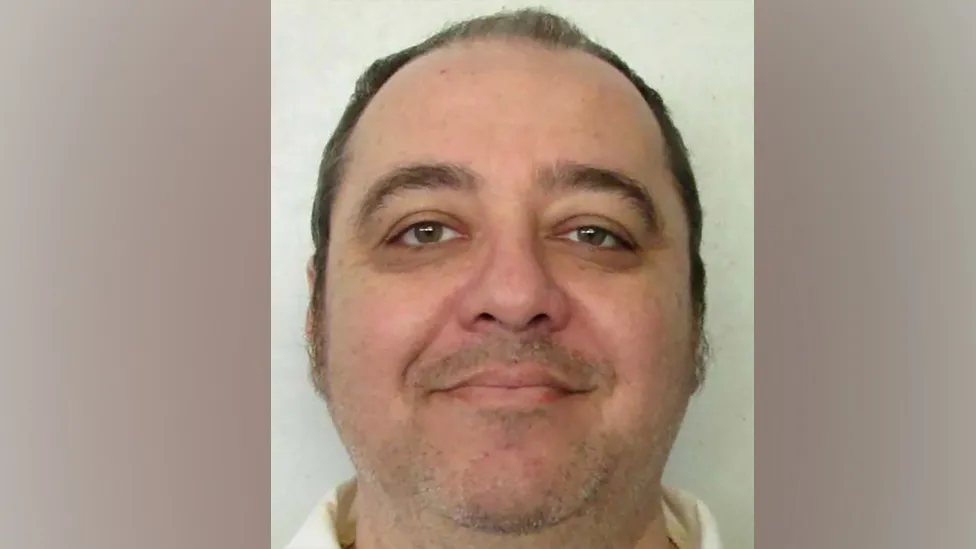Alabama has executed convicted murderer Kenneth Eugene Smith with nitrogen gas, the first time the method of capital punishment has been used globally.
A witness told the BBC that Smith thrashed violently on the gurney and the execution took around 25 minutes.
The UN condemned it on Friday as cruel but Alabama said the process had been carried out humanely.
Smith was convicted in 1989 of murdering a preacher’s wife, Elizabeth Sennett, in a killing-for-hire.
In his final words, the 58-year-old said his death would mean Alabama had taken humanity “a step backwards”.
Mike Sennett, the son of the victim, said the family wouldn’t be celebrating but that Smith had paid his “debt”.
“Nothing that happened here today is going to bring Mom back,” he said, adding: “We’re glad this day is over”.
According to the Death Penalty Information Center, Smith is the first person to be put to death using pure nitrogen gas anywhere in the world.
The execution began at 19:53 local time (01:53 GMT) and he was pronounced dead at 20:25 (02:35 GMT).
Alabama and two other US states have approved the use of nitrogen hypoxia as an alternative method of execution because the drugs used in lethal injections have become more difficult to find, contributing to a fall in the use of the death penalty nationally.
“Tonight Alabama causes humanity to take a step backwards,” Smith said, according to witnesses. “Thank you for supporting me. Love all of you.”
After the gas began to flow into his mask, the inmate is said to have smiled, nodded toward his family and signed “I love you”.
One of the five members of the media transported to Holman Correctional Facility in Atmore to witness the execution told the BBC it was unlike any other he’d witnessed in Alabama.
“I’ve been to four previous executions and I’ve never seen a condemned inmate thrash in the way that Kenneth Smith reacted to the nitrogen gas,” Lee Hedgepeth told the BBC’s Newsday programme.
“Kenny just began to gasp for air repeatedly and the execution took about 25 minutes total.”
Breathing nitrogen without oxygen causes cells in the body to break down and leads to death.
Alabama Governor Kay Ivey, who did not respond to a request to attend the execution, confirmed Smith’s death in a statement.
“After more than 30 years and attempt after attempt to game the system, Mr Smith has answered for his horrendous crimes,” she said.
“I pray that Elizabeth Sennett’s family can receive closure after all these years dealing with that great loss.”
Attorney General Steve Marshall said it had proved to be “an effective and humane method of execution”, refuting the “dire predictions” of activists and the media.
“Justice has been served,” his statement added.
Alabama corrections Commissioner John Hamm said Smith’s shaking on the gurney appeared to be involuntary movements.
“That was all expected and was in the side effects that we’ve seen or researched on nitrogen hypoxia,” Mr Hamm said. “Nothing was out of the ordinary from what we were expecting.”
Alabama said in an earlier court filing that it expected Smith to lose consciousness within seconds and die in a matter of minutes.
Smith was one of two men convicted of murdering Mrs Sennett in a $1,000 (£790) killing-for-hire in March 1988.
The 45-year-old was beaten with a fireplace implement and stabbed in the chest and neck, and her death was staged to look like a home invasion and burglary.
Her husband Charles Sennett, a debt-ridden preacher, had orchestrated the scheme to collect insurance money. He killed himself as investigators closed in.
Smith’s fellow hitman, John Forrest Parker, was executed in 2010.
At his trial Smith admitted to being present when the victim was killed, but said he did not take part in the attack.

